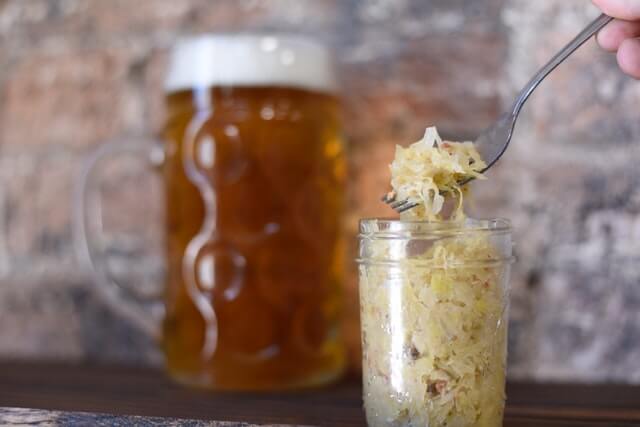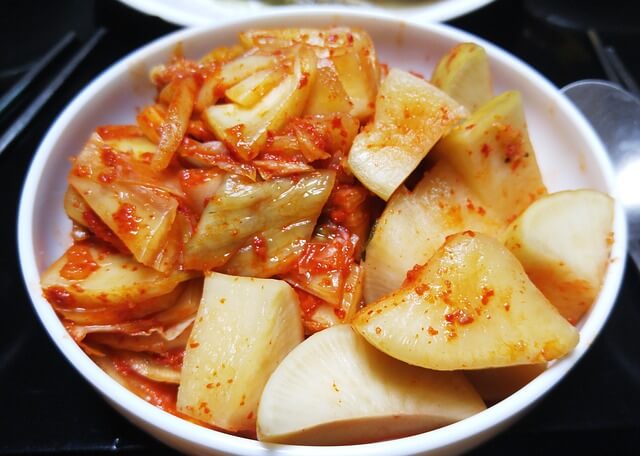Gut health refers to the balance of microorganisms that live in the digestive tract. Maintaining the right balance of these microorganisms is vital for physical and mental health, immunity, and more.
The human body is teeming with trillions of viruses, parasites, fungi, and bacteria. Collectively known as microbes, large communities of these ‘bugs’ exist inside your body to support a number of important functions from the moment you are born. The majority of microbes in the human body are found in the cecum, a sort of “pouch” that makes up the first region of the large intestine. However, over the years, people have come to refer to it as the “gut microbiome.”
Babies are first exposed to microbes during delivery when they pass through their mother’s birth canal. Later, as they come in contact with other sources of microbes, such as breast milk, their gut microbiome starts to strengthen and diversify. A diverse microbiome rich with different microbial species is generally considered a good indicator of a healthy gut.
There are more than 1,000 species of bacteria in the gut microbiome. Most of them are ‘good’ and carry out specific tasks to support health, like absorbing nutrients, promoting heart health, and keeping blood sugar under control, among many others. When you have a robust gut microbiome, these good bacteria outnumber harmful bacteria that may trigger unnecessary inflammatory responses and cause disease.
Each person has their own unique gut microbiome, which is, in part, determined by their DNA and other hereditary factors. But fortunately, the foods that you eat also influence your gut microbiome, allowing you to fine-tune the types of bacteria that live inside you so you can look and feel your best.
Here are 5 evidence-based foods that heal and strengthen your gut:
Sauerkraut
Fermented foods are very hot right now; kimchi, kombucha, miso, tempeh, kefir, probiotic yogurts… the list goes on and on. Fermenting food brings to life vast colonies of healthy bacteria that are hard to obtain in other ways, and these mighty bugs have myriad health effects, like improving digestion, boosting immunity, and supporting weight loss, among others.
Sauerkraut is, according to many, the crown jewel of fermented foods. The name means sour white cabbage in German, and it has been used for centuries as a means of preserving cabbage and extend its shelf life. It has a distinct tart flavor that emerges from the lactic acid released by bacteria when they ingest the sugars in the cabbage leaves. A spoonful of sauerkraut delivers an even higher dose of probiotics and fiber than most yogurts in the market.

Sauerkraut is gut friendly
Low in calories and high in essential nutrients, just a cup of this superfood fulfills 35 percent of your daily vitamin C needs and 21 percent of your daily vitamin K needs for a scant 27 calories.
Garlic
With the rise in popularity of gut health in the world of nutrition, probiotics and prebiotics have become pretty important topics of conversation. Although they sound similar, probiotics and prebiotics play different roles in the body. Put simply, probiotics are the good bacteria that you can find in food or supplements, while prebiotics are a type of fiber that the human body cannot digest, but bacteria can. Essentially, prebiotics are food for friendly bacteria.
Raw garlic is a delicious and accessible prebiotic food loaded with health-promoting compounds like inulin, manganese, selenium, allicin, and sulfur. Research has shown that the inulin in garlic boosts the production of good bacteria in your gut. It also contains antioxidants that may help protect against oxidative stress, a precursor of neurodegenerative conditions like Alzheimer’s disease and dementia.
Asparagus
Another great prebiotic food, asparagus contain high levels of inulin, the dietary fiber that feeds friendly bacteria, promotes digestive health, aids weight loss, and keeps you full longer. Asparagus are also low in calories but pack an impressive, nutritious punch.
A cupful of asparagus will only set you back 40 calories while offering almost as much potassium as a medium-sized banana and 57 percent of the recommended daily intake of vitamin K, which is essential for heart health and circulation.
Kimchi
Many of the pickled and fermented foods that we know and love today were invented hundreds, if not thousands of years ago, as a means to preserve food long before there were refrigerators and stabilizers that extended shelf life. That is also how kimchi came about. A traditional Korean dish made with fermented vegetables and varying seasonings like sugar, ginger, spring onions, and chilis, early versions of kimchi can be traced back almost 3,000 years.

A plate of kimchi — a great side dish.
Typically, kimchi is made with cabbage, though it is common to include other vegetables such as cucumbers, carrots, parsnips, radishes, beets, and bamboo shoots. It can be eaten fresh, or it can be left to ferment for a few days or weeks – it will become funkier and more acidic the longer it sits.
When left to ferment, the bacterial strain Lactobacillus eats the sugars in the cabbage and turns it into lactic acid, giving kimchi its characteristic tang. This transformation turns kimchi from a spicy, crunchy snack, into a probiotic powerhouse packed with health-boosting bacteria.
Not sure how to eat kimchi? Truth is, you can add it pretty much to anything! But if you still need some ideas, try:
- Adding it to steamed white rice for a tangy kick
- Mixing it with pancake batter for savory, crunchy pancakes or waffles
- Folding it into scrambled eggs for an umami-packed breakfast
- Eating as is for a funky, gut-friendly snack
Miso Paste (broth, paste, soup, dressing etc.)
Miso is rich in essential minerals and a good source of various B vitamins, vitamins E, K, and folic acid. Miso is a salty paste made from fermented beans (usually soybeans) that has been a staple ingredient in the Japanese diet for thousands of years. As a fermented food, miso provides the gut with beneficial bacteria that help us to stay healthy, vibrant and happy; good gut health is known to be linked to our overall mental and physical wellness.
Red vs. White Miso
There are many different miso products available, and several varieties of miso available as well. Two of the most common types are red and white.
White miso paste is made from soybeans that have been fermented with a higher percentage of rice. This results in a lighter color and gives the final product a slightly sweeter taste. Red miso, on the other hand, is made from soybeans that have been fermented for longer periods of time, typically with barley or other grains. It tends to have a deep, rich and salty flavor, plus a darker color that ranges from red to brown.
Sourdough
Provided you are not allergic to gluten or sensitive to gluten, sourdough is your best option for gut health if you enjoy eating bread. Made by fermenting the yeast naturally present in flour and water, sourdough is considerably healthier and tastier – than regular white bread because it is easier to digest.

Sourdough
Making your own sourdough starter to bake your own sourdough bread at home is easy. You just need three ingredients: flour, water, and some patience! Watch this short video to learn how to make it.
Foods to skip
Many factors of our modern life can be damaging to our gut microbiome. Having a frequently upset stomach, sleep disturbances, skin rashes or irritation, autoimmune conditions, allergies, and even migraines are just a few ways an unhealthy gut may manifest. Avoid these foods and drinks as much as possible to keep your gut microbiome happy:
- Fried foods
- Alcohol and caffeine in excess
- Red meat
- Artificial sweeteners
- Sugary drinks
- Sodas and seltzers (including sugar-free)
Incorporating some of these gut-friendly foods into your diet while eliminating others’ will help you maintain the right balance of microorganisms vital to a strong immune system and your overall physical and mental health.


